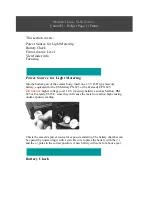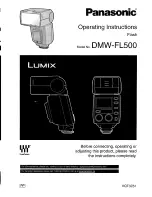
V1.02
Thom Hogan’s Complete Guide to the Nikon D300
Page 732
it’ll last (think of having your camera sitting on your desk
connected to the computer—will
you
spill drinks on it or
accidentally knock it off onto the floor?).
Method #3 is one that I sometimes use on long trips. It’s my
preferred method when I’m away from the office for long
stretches of time, as the portable storage device acts as a
temporary home for my images (I regularly back up the
portable storage device to another USB drive connected to my
laptop, by the way). This frees up my cards for more use and
puts all of my images from a trip in one place, which makes it
easier to transfer them all when I get home.
Still, you’ll want a card slot or card reader on your computer
just in case you ever need to resurrect accidentally “deleted”
images or if you need to reformat the card for some reason.
Both of the first two methods require either specialized
software or manual copying. (The third method requires
special hardware, as well.)
If you plug the camera into your computer, the CompactFlash
card in the D300 will show up as a “drive” on your computer
(on Windows that’s true if you’ve set the
USB
function to
Mass storage
or
MTP/PTP
163
). Thus, you can manually drag
files from the camera to your computer, just as you would
move files from any drive to another.
Automated copying works better, in my opinion, because it
gives you renaming options, if nothing else. Photoshop
Elements, Apple iPhoto, Nikon Transfer, Photo Mechanic,
Lightroom, and a host of other programs install automated
copying processes that pop up when you connect your
camera or insert your camera’s card into a slot or reader on
your computer. I’ll deal with Nikon Transfer in detail in the
Introduction to Nikon Software
eBook that accompanied this
163
It is different for Macintosh users: the camera doesn’t show up as a drive unless
you’ve selected
Mass Storage
, which explains Nikon’s default to
Mass Storage
.
















































